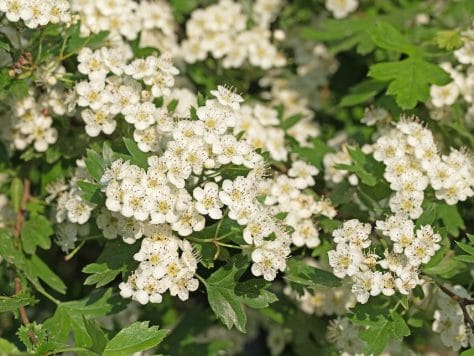Hawthorn has been named the medicinal plant of the year 2019!
For centuries, the hawthorn is used in medicine. Already pastor Sebastian Kneipp recommended the Plant to support the heart and circulation. The study group development history of medicinal plant science at the University of Würzburg has chosen the hawthorn medicinal plant of the year 2019.

In ancient times, people have used the hawthorn family Rosaceae against colic and diarrhea. First studies on the healing power of hawthorn followed by the end of the 19th century. Century in the United States. From the 1970s, numerous applications for hawthorn extract were known, such as in the case of heart disease due to age, stress and high blood pressure.
Hawthorn extract as a traditional medicine
Due to the many years of experience, the safety and good tolerability of the active ingredient hawthorn were classified leaves with flowers of the German regulatory authority in 2016, as a traditional herbal medicinal product. Based on years of experience hawthorn leaves can be knock with flowers also in the case of intermittent nervous heart complaints (e.g., heart, through fear premature beats) used for extra, if the doctor has excluded serious disease. Is also advocated in the application, in the case of mild symptoms of Stress and as a sleeping aid. Due to the known effects of the use of hawthorn extract not only functional (not organically related) heart complaints, but also at the first signs of heart failure and for the prevention of heart weakness be very useful. For the manufacture of medicines made from hawthorn, the leaves are used with the bright-white flowers of the hawthorn shrubs or trees. They contain important phytochemicals, such as the oligomers Prozyanidine, which are responsible for the effect. In Central Europe, several species of hawthorn are found, including the Eingriffelige (Crataegus monogyna Jacq.) and two griffelige hawthorn (Crataegus laevigata (Poir.) DC), used in the manufacture of medicinal products.
Effects of hawthorn on the heart and blood vessels are many and varied
Numerous scientific studies have found in the last few decades, such as hawthorn for the heart-extract and circulatory function supports. The herbal ingredient has a positive effect on the Capacity of the heart. The blood flow of the coronary vessels and the heart muscle is increased by the production of vascular stimulates further neurotransmitter nitric oxide (NO) and its degradation is inhibited. By increasing the force of contraction of the heart, the improvement of the conduction and the increase of the threshold hawthorn extract can also one of heart rhythm disorders protect. Similarly, the extract from hawthorn leaves with flowers keeps blood vessels elastic, so the age-related loss of elasticity of the arterial blood is improved vessels. Also, the disease-related disturbances of the endothelial function (endothelium = be reduced to an inner vessel wall of the blood vessels) and peripheral vascular resistance is lowered. It comes to an increase in the load capacity and shortness of breath when the load occurs later. Current studies were able to show that the quality of life of patients, improved taking of hawthorn extract and physical performance increased (Härtel et al., 2014).
The positive effect is due to scientific findings on secondary plant substances. You have, among other things, a positive effect on the Capacity of the heart. The blood flow of the coronary vessels and the heart muscle is increased by the production of vascular stimulates further neurotransmitter nitric oxide and the degradation is inhibited.
But also in the kitchen hawthorn is an asset. From the flowers and leaves a tasty tea can be prepared. The red berries are ripe in autumn and are edible. The flesh of the fruit, however, raw a floury consistency. Processed only in the compote, jelly, juice and syrup the fruits develop to its pleasant sweet-sour Aroma. You would like to be combined with other fruits such as Apples and quinces. Hawthorn berries are rich in Vitamin C, Provitamin A, and pectin.
